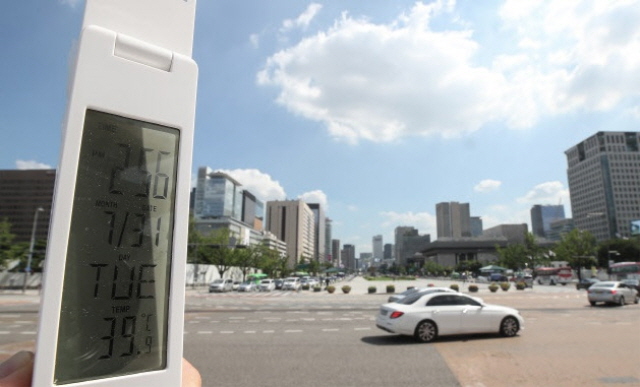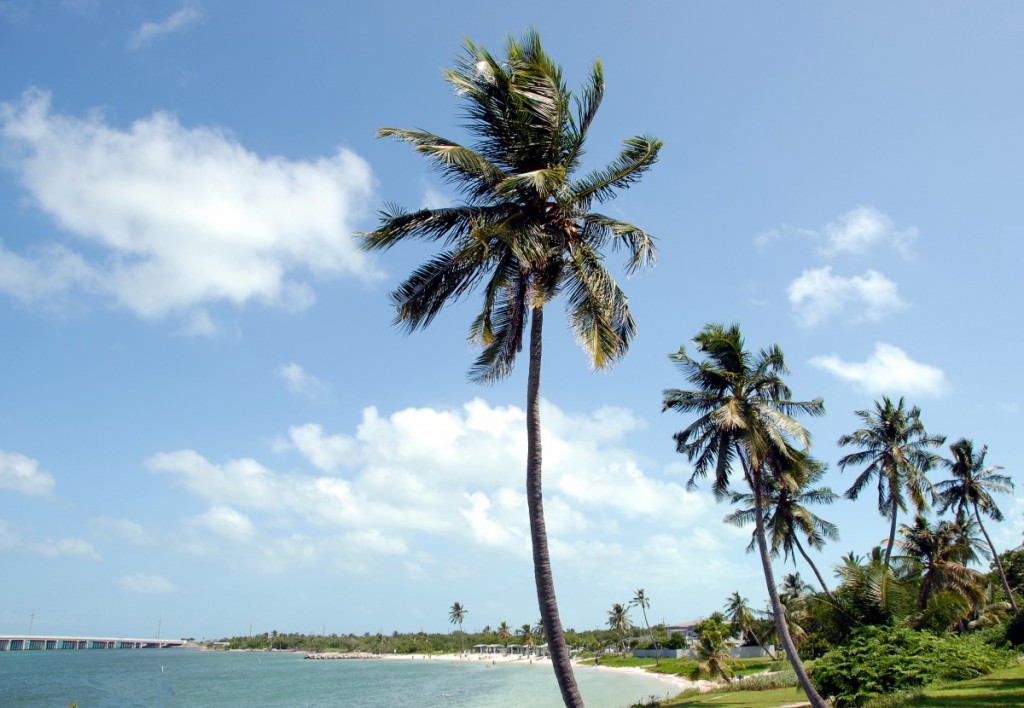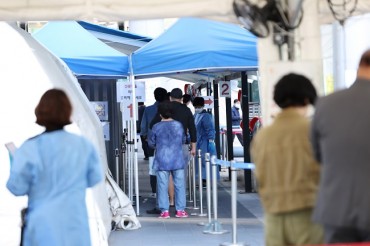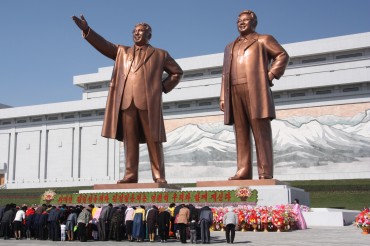
This photo filed July 31, 2018 shows a thermometer displaying a mercury of 39 degrees Celcius in front of central Gwanghwamun in Seoul in the afternoon. (image: Yonhap)
SEOUL, Aug. 20 (Korea Bizwire) — As one of the worst heat waves ever recorded in the nation’s history rages on, the entire nation has been suffering from discomfort in the scorching heat.
Agricultural products have dried up and livestock have collapsed without a struggle. Schools of fish perished in the nation’s rivers and reservoirs.
Humans were not exempt from heat-related accidents and illnesses, with an endless number of people visiting their doctors afflicted with heat-related sickness.
As summer temperatures have shot up to levels beyond those observed in Southeast Asia and even some parts of Africa, some are worried that Korea’s climate may be shifting towards more tropical conditions.
Throughout the summer, record high temperatures were reset almost every single day.
On August 1, the mercury shot up to a staggering 41 degrees Celsius in Hongcheon, Gangwon Province, shattering the previous all-time-high of 37.9 degrees set in August 6, 2012.
Temperatures in Seoul also shot up to 39.6 degrees on August 1, which was the highest temperature for the capital city in 75 years.
Temperatures for the same day in Vietnam’s Danang, Egypt’s Cairo, and Tunisia’s Jendouba were all lower at 34.6 degrees, 36.8 degrees, and 37.6 degrees, respectively.
The year with the greatest number of days affected by heat waves was 1994. The number of days that affected by heat waves was, on average nationally, 27.3 days in 1994.

As summer temperatures have shot up to levels beyond those observed in Southeast Asia and even some parts of Africa, some are worried that Korea’s climate may be shifting towards more tropical conditions. (Image courtesy of PxHere)
The number of days affected by a heat wave is determined when the average of high temperatures goes above 33 degrees.
In July alone this year, 15.5 so-called ‘heat wave’ days were recorded on average nationally. Including the days hit by the heat wave in August, this number is expected to exceeded the previous record levels observed in 1994.
In addition, as low temperature continue to hover above 25 degrees, many Seoulites found it hard to sleep during the tropical nights.
Record-setting 1994 had the greatest number of tropical nights on record with 16, which is on par with this year’s number of tropical nights at 15.7 days.
After August 12, temperature highs in Seoul did not fall below 30 degrees throughout the night, causing extreme tropical conditions. Seoul residents were unable to get to sleep without relying on air conditioners.
While some say that the extreme temperature conditions were caused by the fact that Korea was not directly affected by a single typhoon this year, others state that the increase in solar insolation led to water temperatures rising off the South Korean coast.
Yet other critics say that the gravity of the situation lies in the fact that Korea is gradually headed to become more influenced by subtropical climate conditions, which happens when temperatures fall between tropical and temperate levels.
Scientist are worried that if this trend continues, subtropical temperatures could move further north to affect North Korea, creating ecosystem changes and raising temperature levels every year.
H. S. Seo (hsseo@koreabizwire.com)






